Collection and Study of the Motility of Antarctic Pteropods
Stephen Childress and Robert Dudley
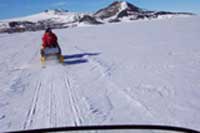
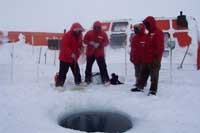
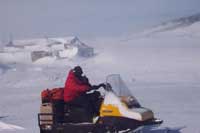



|
"The purpose of this visit to McMurdo Station is to collect and study the motility of two species of Antarctic pteropods. Our work involves both field collecting and laboratory studies at the Crary Laboratory of McMurdo Station. The collecting, at various sights within snowmobile, Spryte, or helicopter range of McMurdo, is through bored ice holes or at a natural ice edge, and is accomplished by dropping a plankton net, usually to a depth of 60-200 feet. The water at some of the sites is much deeper. The laboratory work will involve the filming of swimming pteropods with a digital video camera, and the analysis of these videos for quantitative information. The medium is seawater at various temperatures aroundthe natural ambient temperature. We also will vary the viscosity of the seawater by addding Dextran, a high molecular weight carbohydrate. Pteropods are small gastropod molluscs. They are distinguished, at an intermediate stage of development, by the presence of both ciliary bands, and a pair of small wings, both of which are used in swimming. Since the swimming is at an intermediate Reynolds number of order 50, these pteropods find themselves swimming above the Stokesian realm, where cilia predominate, and below the Eulerian realm, where wings tend to dominate. An understanding of how both are used in different ways during the development of the pteropod may help us understand something about the emergence of winged flight." The following web pages contain more information and images of the antarctic trip: "Transition from ciliary to flapping mode in a swimming mollusc:
flapping flight as a bifurcation in Re_omegsa" , Submitted to
Journal of Fluid Mechanics, September 2002 Three sequences of pteropod locomotion, showing a mixture of ciliary and flapping modes (in avi format - 6,9,6 MBytes respectively) 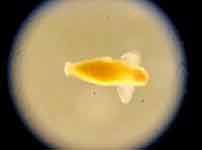 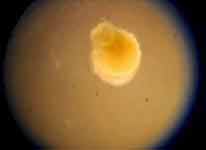 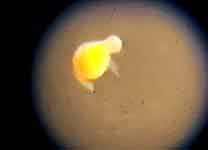 |